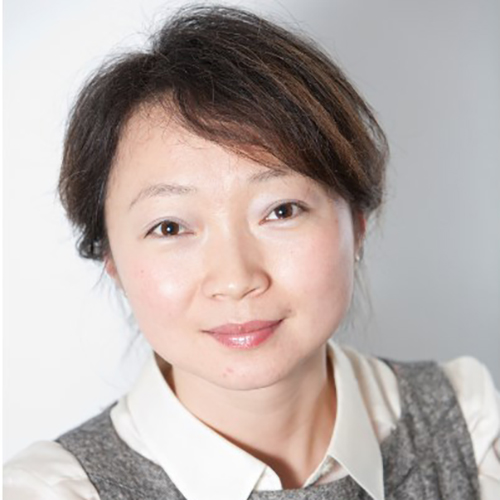Key details
Dr Jiayun Pang
Associate Professor
Dr Pang received her BSc Medicinal Chemistry from Shenyang Pharmaceutical University, China, and her PhD in Computational Chemistry from the University of Birmingham in 2006. She then moved to the University of Manchester to work as a postdoctoral research associate, where her research focused on the study of quantum phenomenon in enzymes using a combined quantum mechanical and molecular mechanical (QM/MM) approach.
Dr Jiayun Pang joined the School of Science at the University of Greenwich in October 2011 and was promoted to Associate Professor in September 2021. Dr Pang’s research expertise lies in the use of computational chemistry and machine learning methods to solve challenges within the field of biophysical, organic and pharmaceutical chemistry.
Responsibilities within the university
Module leader
- Applied Physical Chemistry (Level 6)
- Advanced Spectroscopy, Thermodynamics, and Quantum Mechanics (Level 6)
Course participation
- Bioinformatics (Level 7)
- Medicinal Chemistry (Level 7)
- Physical Chemistry (Level 4)
- Further Physical Chemistry (Level 5)
- Computational Chemistry (Level 7)
- BSc/MSc project
Awards
- Royal Society of Chemistry Rita and John Cornforth Award (2009)
Recognition
- Fellow of the Royal Society of Chemistry (FRSC)
- Senior Fellow of the Higher Education Academy (SFHEA)
- Elected Committee Member of the Molecular Graphics and Modelling Society (MGMS)
Research / Scholarly interests
Jiayun Pang’s research focus on the use of computational methods to understand molecular properties, chemical reactions, and biological macromolecules, such as enzymes. Her research areas include:
- Incorporating machine learning algorithms to enhance the predictive power of computational chemistry, in particular using deep learning algorithms inspired by Natural Language Processing (NLP) to explore the vast chemical space to enable more accurate prediction of structure-property relationships.
- Studying the mechanisms of organic reactions using DFT calculations and using feature-based machine learning models to predict reaction selectivity.
- Enzyme catalysis using the combined QM/MM method, enhanced free-energy sampling and precise reaction rate calculations which take into account the hydrogen tunnelling effect.
Recent publications
Article
Pang, Jiayun and , Vulic, Ivan (2024), Specialising and analysing instruction-tuned and byte-level language models for organic reaction prediction. Royal Society of Chemistry. In: , , , . Royal Society of Chemistry, Faraday Discussions ISSN: 1359-6640 (Print), 1364-5498 (Online) (doi: https://doi.org/10.1039/D4FD00104D).
Pang, Jiayun , Pine, Alexander, Sulemana, Abdulai (2023), Using Natural Language Processing (NLP)-inspired molecular embedding approach to predict Hansen solubility parameters. Royal Society of Chemistry. In: , , , . Royal Society of Chemistry, Digital Discovery 2635-098X (Online) (doi: https://doi.org/10.1039/d3dd00119a).
Yin, Lina , Guan, Ting, Cheng, Jie, Pan, Dongchao , Lu, Jinyang , Huang, Jiahui , Wu, Jiaqi , Chen, Xiaoli , You, Taiyun , Huo, Xuting (2022), Manipulations of phenylnorbornyl palladium species for multicomponent construction of a bridged polycyclic privileged scaffold. Nature Research. In: , , , . Nature Research, Communications Chemistry, 5: 140 (1) 2399-3669 (Online) (doi: https://doi.org/10.1038/s42004-022-00759-4).
